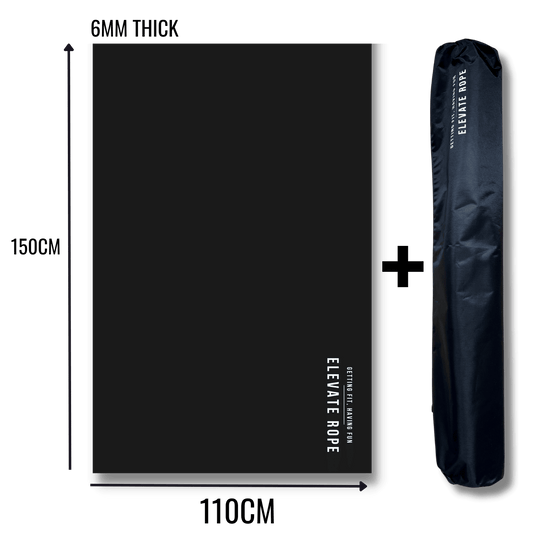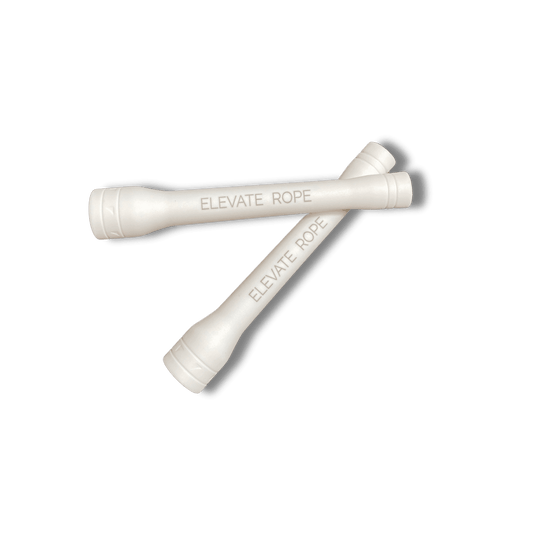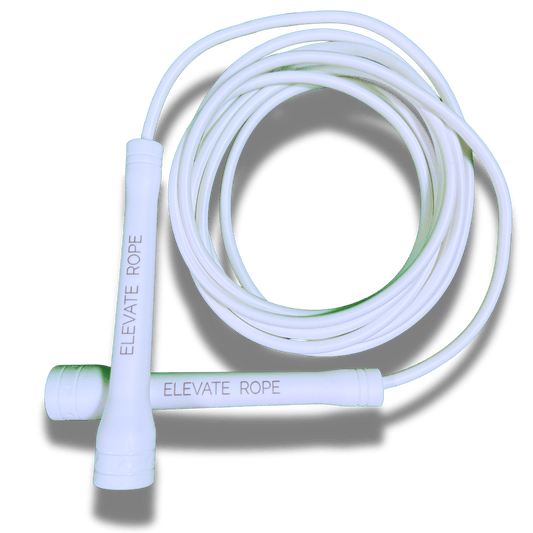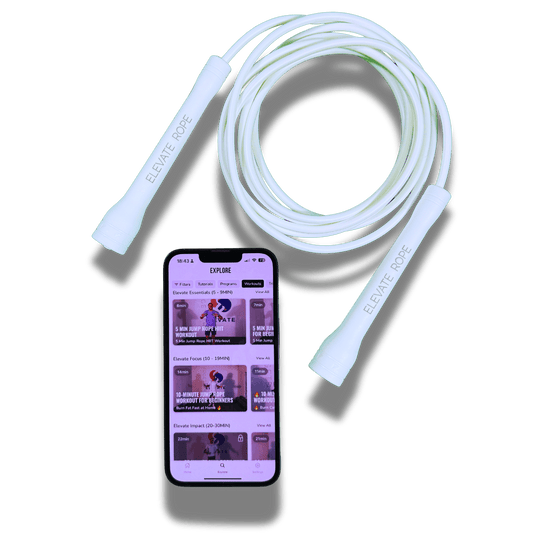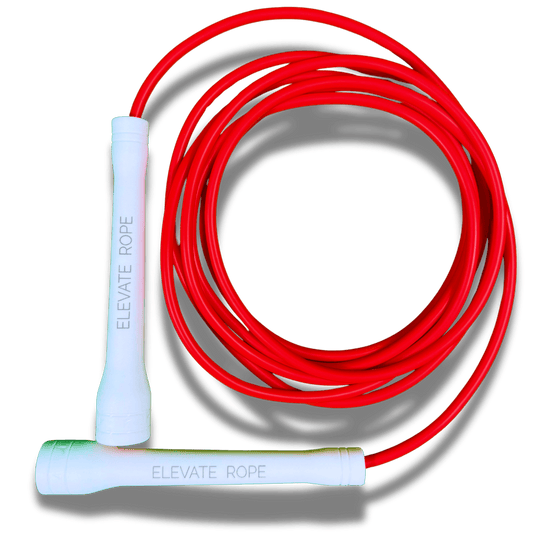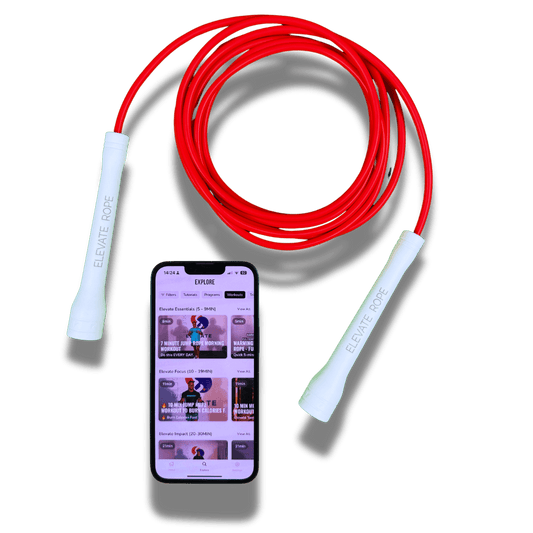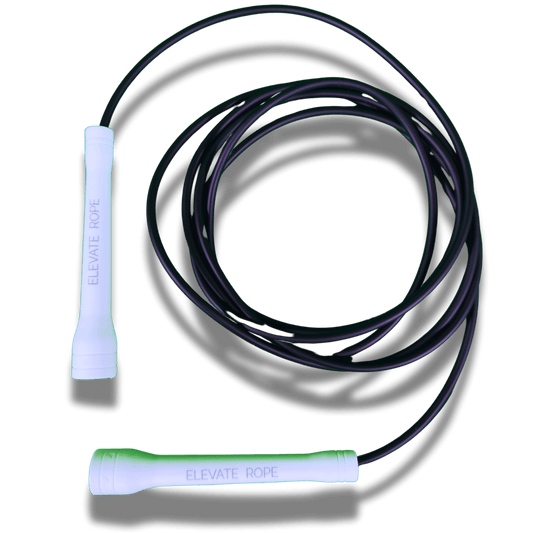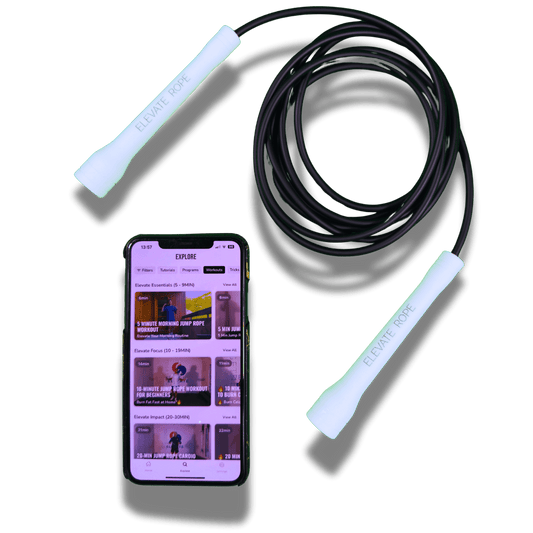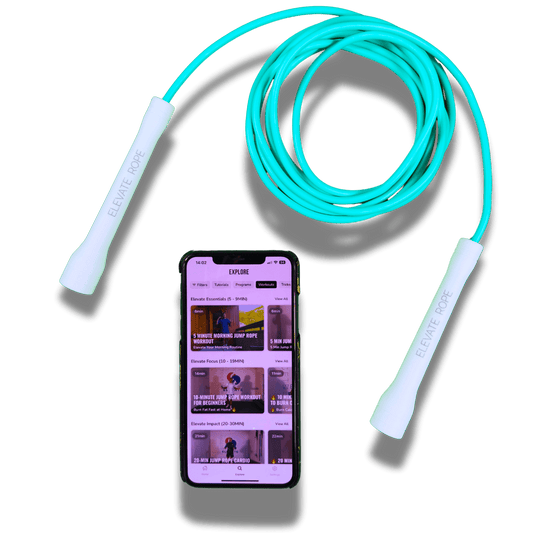El poder sanador del movimiento
Hay algo silenciosamente poderoso en descubrir tu propósito al saltar la cuerda. No se trata solo de sudar en otro entrenamiento o quemar calorías, sino de encontrar un ritmo que sana, empodera y te reconecta contigo mismo. Cuando el mundo se siente ruidoso, el sonido de la cuerda cortando el aire puede convertirse en tu calma, tu enfoque, tu terapia en movimiento.
Para muchos, tomar una cuerda comienza como una simple elección de fitness. Pero en algún punto entre los primeros saltos torpes y ese flujo sin esfuerzo, algo cambia. La mente comienza a despejarse. El estrés afloja su agarre. Dejas de saltar para “hacer ejercicio” y comienzas a saltar para sentirte vivo. Esa es la belleza: una cuerda simple se convierte en un espejo de resiliencia, presencia y confianza en uno mismo.
El movimiento siempre ha sido medicina. Ya sea el ritmo del corredor, la liberación del bailarín o la quietud del yogui, el flujo físico restaura lo que el caos mental roba. Saltar la cuerda aporta su propia versión de esa sanación: rápida, fluida y llena de energía. Es a la vez arraigante y estimulante; te recuerda que cada vuelta de la cuerda es una oportunidad para empezar de nuevo.
En este artículo, exploraremos cómo algo tan pequeño como una cuerda puede reconstruir la confianza, liberar el estrés y darle propósito a tu movimiento diario. Verás por qué atletas, creadores y personas comunes recurren a la cuerda no solo para fitness, sino para enfoque, claridad y recuperación emocional.

De ejercicio a expresión: cómo se siente diferente el propósito al saltar la cuerda
La mayoría de los entrenamientos se tratan de esforzarse — más duro, más rápido, más tiempo. Pero cuando encuentras tu propósito al saltar la cuerda, se trata menos de esforzarse y más de fluir. Hay ritmo en lugar de resistencia, creatividad en lugar de control. Cada giro de la cuerda, cada rebote de tus pies, se siente como una conversación entre tu cuerpo y tu respiración. Es movimiento como expresión — no como castigo.
Saltar la cuerda es diferente porque habla el idioma del ritmo. La repetición constante, el tempo constante, la música de la cuerda golpeando el suelo: todo te lleva a un estado que se siente vivo y centrado. No tienes que perseguir la atención plena; llega de forma natural, a través del movimiento. Tu cuerpo se convierte en el ritmo, tu respiración en la melodía, y tu mente — finalmente — encuentra silencio.
La ciencia también lo respalda. Los estudios sobre el movimiento rítmico muestran que actividades repetitivas de cuerpo completo, como saltar la cuerda, pueden regular tu sistema nervioso y reducir la ansiedad mediante el sincronismo rítmico: tu cerebro sincronizándose con el patrón del movimiento para crear calma.
👉 Aprende más sobre cómo el movimiento rítmico impacta la salud mental.
Por eso las personas que abrazan su propósito de saltar la cuerda a menudo lo describen como terapia en movimiento. No se trata solo de habilidad física, sino de autoconciencia. La cuerda exige presencia. En el momento en que te distraes con un pensamiento, tropiezas. En el instante en que te reconectas, deslizas. Este ciclo de retroalimentación te mantiene anclado en el ahora, enseñando enfoque y paciencia un salto a la vez.
La belleza de esta práctica radica en su libertad. Puedes expresar emoción a través del estilo — ligero, rápido, juguetón o fuerte — y cada sesión refleja cómo te sientes por dentro. De esa manera, saltar la cuerda se convierte en un espejo. Cuando tu energía fluye, también lo hace tu cuerda. Cuando estás tenso, ella se resiste. Aprender a moverte con ella, no contra ella, es donde comienza el crecimiento. Ese es el propósito de saltar la cuerda: moverte en alineación con quien estás llegando a ser.
La ciencia detrás de la calma — Cómo saltar la cuerda afecta tu cerebro
Para entender el verdadero propósito de saltar la cuerda, tienes que mirar más allá de los músculos y el movimiento, directamente al cerebro. Cada vez que saltas, tu cuerpo desencadena una cadena compleja de reacciones químicas que influyen en el ánimo, el enfoque y la estabilidad emocional. ¿Lo mejor? Estos efectos no solo te hacen más en forma; te hacen sentirte mejor.
Cuando saltas la cuerda, tu cuerpo libera una ola de endorfinas, esas hormonas naturales de “bienestar” que elevan el ánimo y reducen la percepción del dolor. Pero hay más sucediendo bajo la superficie. El patrón rítmico y constante de girar la cuerda y aterrizar suavemente reinicia tu sistema nervioso. Enseña a tu cuerpo a equilibrar hormonas del estrés como el cortisol mientras activa el sistema nervioso parasimpático, la parte responsable del descanso y la recuperación.
En neurociencia, esta regulación rítmica a menudo se compara con la meditación o la respiración controlada. Ambas ayudan al cerebro a pasar del modo de alta alerta “lucha o huida” a la calma y la conexión. Saltar la cuerda crea naturalmente ese cambio a través de la repetición y el enfoque. Con cada rotación, le dices a tu cuerpo: “Estás seguro. Tienes el control.” Por eso muchas personas describen su propósito de saltar la cuerda como encontrar paz a través del ritmo.
Más allá de las hormonas, saltar mejora la neuroplasticidad, la capacidad de tu cerebro para formar nuevas conexiones. La coordinación, el tiempo y el ritmo desafían múltiples regiones cerebrales simultáneamente: el cerebelo para el equilibrio, la corteza motora para el movimiento y la corteza prefrontal para la atención. Cuando estas áreas trabajan juntas, el rendimiento cognitivo mejora. Piensas con más claridad, reaccionas más rápido y mantienes la agilidad mental.
Es fascinante que un acto tan simple pueda tener efectos tan complejos. Sin embargo, eso es lo que define el propósito más profundo de la cuerda para saltar — la transformación a través de la simplicidad. No necesitas máquinas sofisticadas ni largas horas en el gimnasio; solo una cuerda, un ritmo y diez minutos de enfoque pueden alterar completamente tu estado mental.
Así que, aunque muchos comienzan a saltar para tonificar su cuerpo, terminan tonificando su mente. Esa es la ciencia de la calma en movimiento: usar el ritmo físico para entrenar la estabilidad emocional. En un mundo adicto a la distracción, la cuerda para saltar reconfigura silenciosamente tu atención — un salto a la vez.

Sanación a través del flujo — El estado terapéutico de enfoque
En el corazón de cada propósito de la cuerda para saltar yace algo casi espiritual: el flujo. Es ese estado donde el tiempo se ralentiza, tus pensamientos se desvanecen y el movimiento se vuelve sin esfuerzo. Estás completamente inmerso en el ritmo — cuerpo y mente moviéndose como uno solo. No se trata de perseguir la perfección, sino de sentir la presencia.
Cuando saltas la cuerda, lograr el flujo no es accidental — está integrado en el proceso. La repetición, el ritmo y la retroalimentación sensorial constante crean el ambiente perfecto para un enfoque profundo. Cada salto ofrece retroalimentación instantánea: si tu atención se desvía, la cuerda te lo recuerda. Es una conversación entre la conciencia y el movimiento que te mantiene anclado en el momento presente.
Este estado de flujo es poderoso para la salud mental. Los psicólogos lo describen como un “enfoque terapéutico,” donde la ansiedad y el exceso de pensamiento se disuelven porque la mente no tiene espacio para distracciones. Estás demasiado siendo para seguir preocupándote. Por eso muchas personas que descubren su propósito de la cuerda para saltar reportan sentirse más ligeras, calmadas y centradas — incluso fuera de sus entrenamientos.
Es un campo de entrenamiento mental disfrazado de fitness. Cada vez que entras en ese ritmo enfocado, le enseñas a tu cerebro a regular la emoción, mantener la concentración y soltar el control. Con el tiempo, esa práctica construye resiliencia en la vida diaria — el mismo tipo de estabilidad interior que se discute en El ciclo de la confianza: cómo las pequeñas victorias construyen fuerza mental — una de nuestras lecturas favoritas sobre mentalidad.
El flujo no es un objetivo; es una práctica. Es lo que sucede cuando el esfuerzo se encuentra con la entrega. El propósito de la cuerda para saltar es hacer que regreses a ese equilibrio — donde no luchas contra la cuerda, sino que bailas con ella. Es en ese espacio donde comienza la sanación, silenciosa, rítmica, un salto a la vez.
Reinicio Emocional — Moviéndose a Través del Estrés, la Ansiedad y la Tristeza
Algunos días, la vida se siente pesada — y ningún pensamiento positivo puede levantarla. Es entonces cuando el movimiento se convierte en medicina. Saltar la cuerda te da una forma simple y física de liberar lo que las palabras no pueden expresar. El ritmo, el sonido, la respiración — juntos crean una vía para que las emociones se muevan a través de ti en lugar de quedarse en ti.
Cuando el estrés se acumula, tu cuerpo lo retiene: hombros tensos, respiración superficial, energía inquieta. Saltar rompe ese patrón. En minutos, tu enfoque cambia de la tensión mental al ritmo físico. Tu respiración se profundiza. Tu corazón se sincroniza con la cuerda. De repente, lo que parecía caos se convierte en orden — no porque el mundo haya cambiado, sino porque tú cambiaste.
Para muchas personas, una breve sesión de saltar la cuerda actúa como un botón de reinicio emocional. Es una oportunidad para despejar la mente sin quedarse quieto. El movimiento transforma la abrumación en impulso. La ansiedad se convierte en control de la respiración. La tristeza en sudor. No se trata de escapar de la emoción, sino de sentirla plenamente — y dejar que la cuerda la guíe hacia afuera.
Por eso el entrenamiento con cuerda se ha convertido en una forma silenciosa de autocuidado para muchos. Es arraigador pero empoderador. Ofrece tanto control como libertad. Después de diez minutos, no solo te sientes físicamente más ligero — estás emocionalmente reiniciado. Recuerdas que el progreso no siempre viene de esforzarte más, sino de moverte a través de lo que sientes.
En su esencia, esto es lo que le da poder a saltar la cuerda: enseña regulación emocional a través del ritmo. Cada salto, una liberación. Cada sesión, un recordatorio de que sanar no tiene que ser estático — puede estar en movimiento, fluyendo al ritmo de tu resiliencia.
Reconstruyendo el Propósito — Cuando el Fitness se Convierte en Autodescubrimiento
Para muchos, saltar la cuerda comienza como un simple ejercicio físico — una forma de moverse, sudar y mejorar. Pero con el tiempo, el propósito de saltar la cuerda evoluciona. Ya no se trata solo de entrenar el cuerpo; se trata de reconstruir la mente.
Cada salto enseña resiliencia. Tropiezas, lo intentas de nuevo. Ese ritmo de esfuerzo y recuperación remodela tu mentalidad. El progreso deja de ser sobre la perfección y se convierte en presencia — el poder de presentarte, incluso en los días difíciles.
La cuerda se convierte en un espejo. Refleja disciplina, enfoque y crecimiento. En el momento en que te comprometes con tu propósito de saltar la cuerda, comienzas a redescubrir quién eres más allá del entrenamiento — paciente, centrado, capaz.
¿Quieres ver esa transformación en acción? Mira este video de YouTube👇 Muestra cómo el propósito, el ritmo y el movimiento se unen para construir confianza desde el interior hacia afuera.
Tu propósito no se encuentra; se construye — un salto, una respiración, un momento a la vez.
